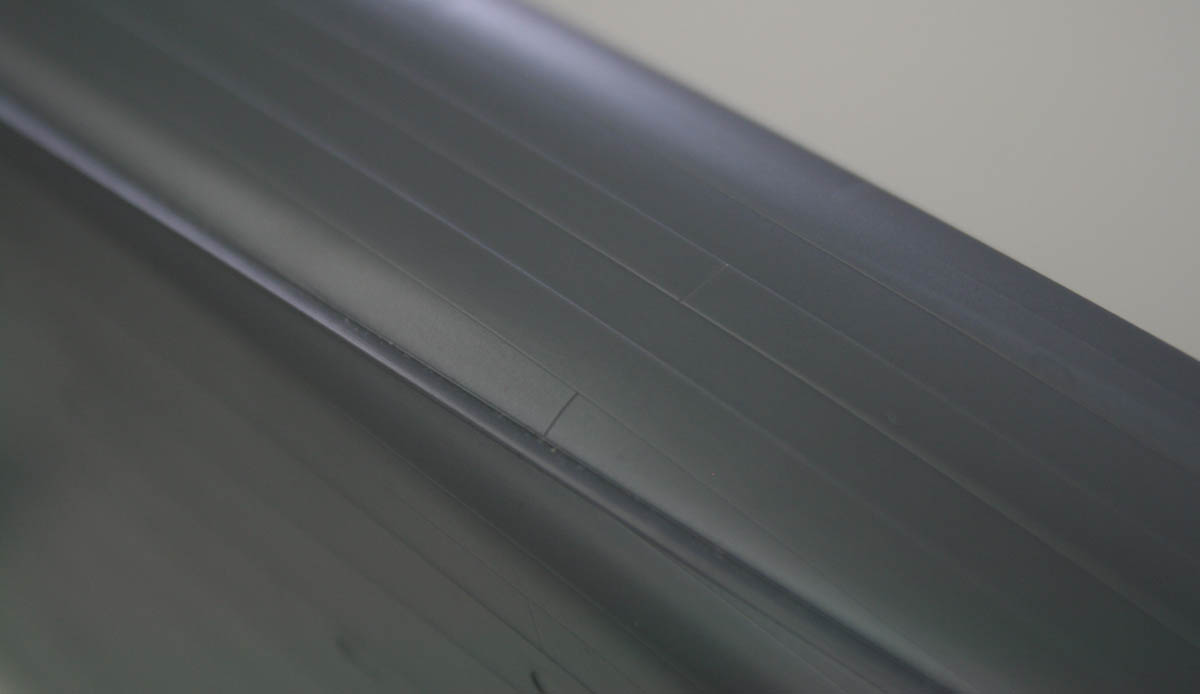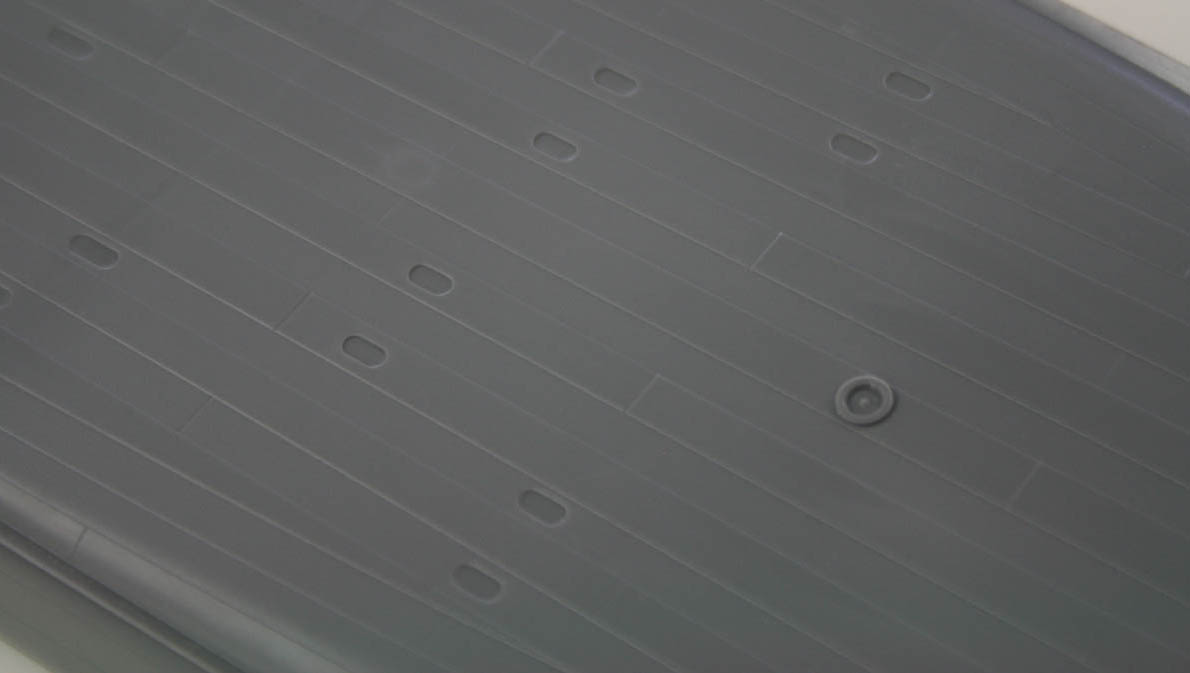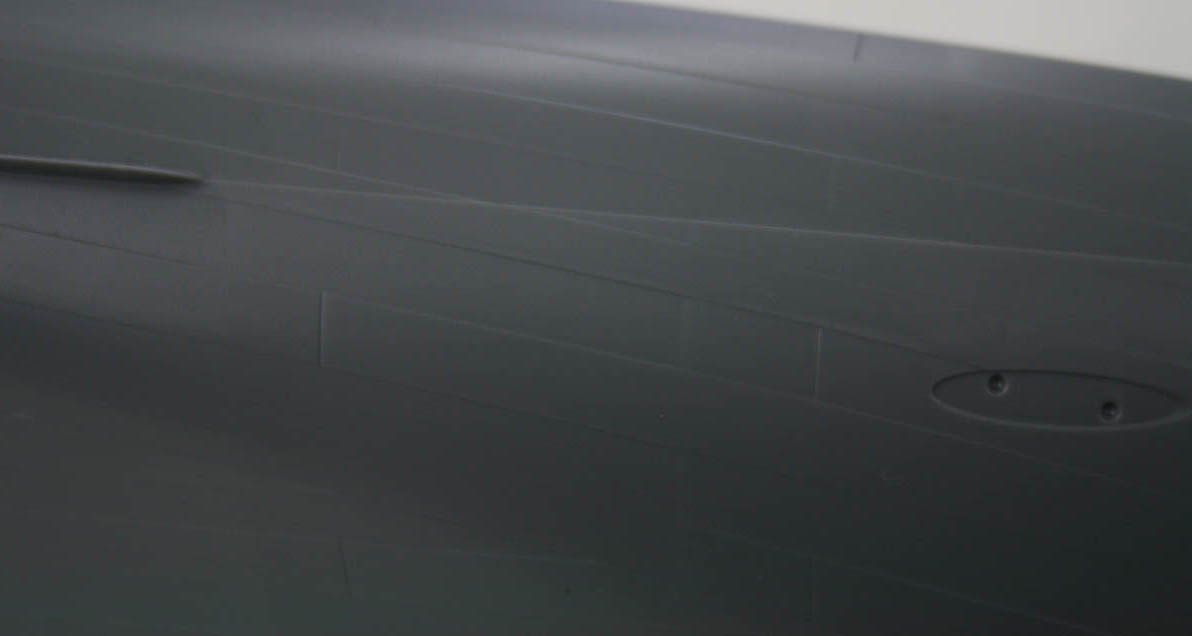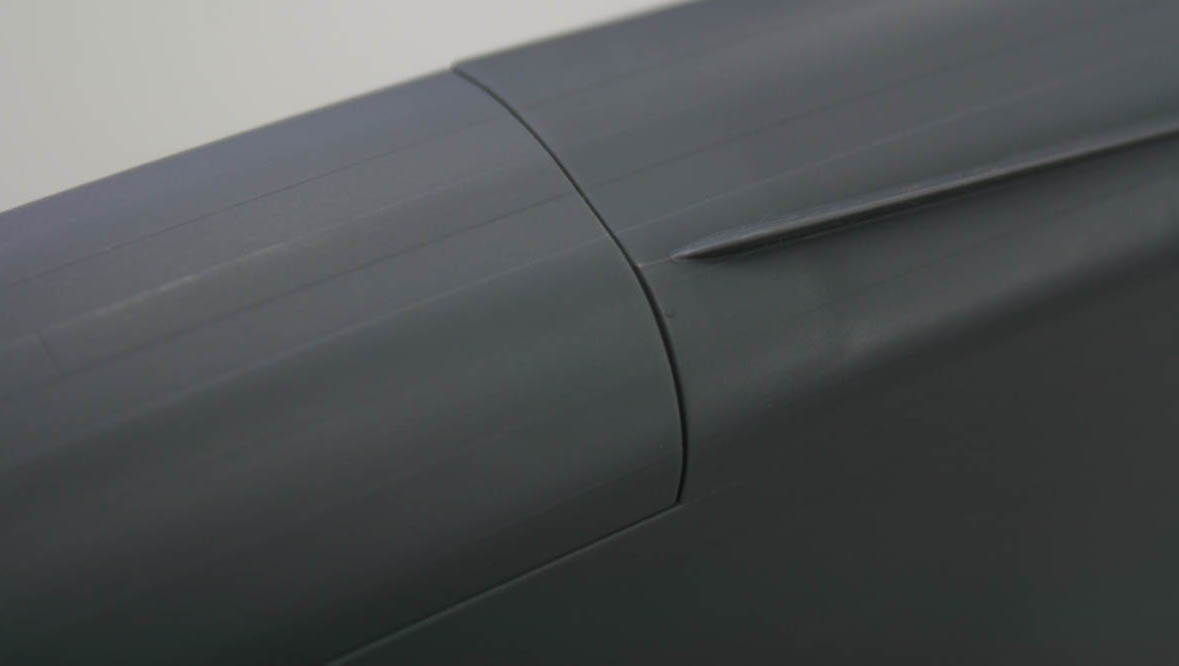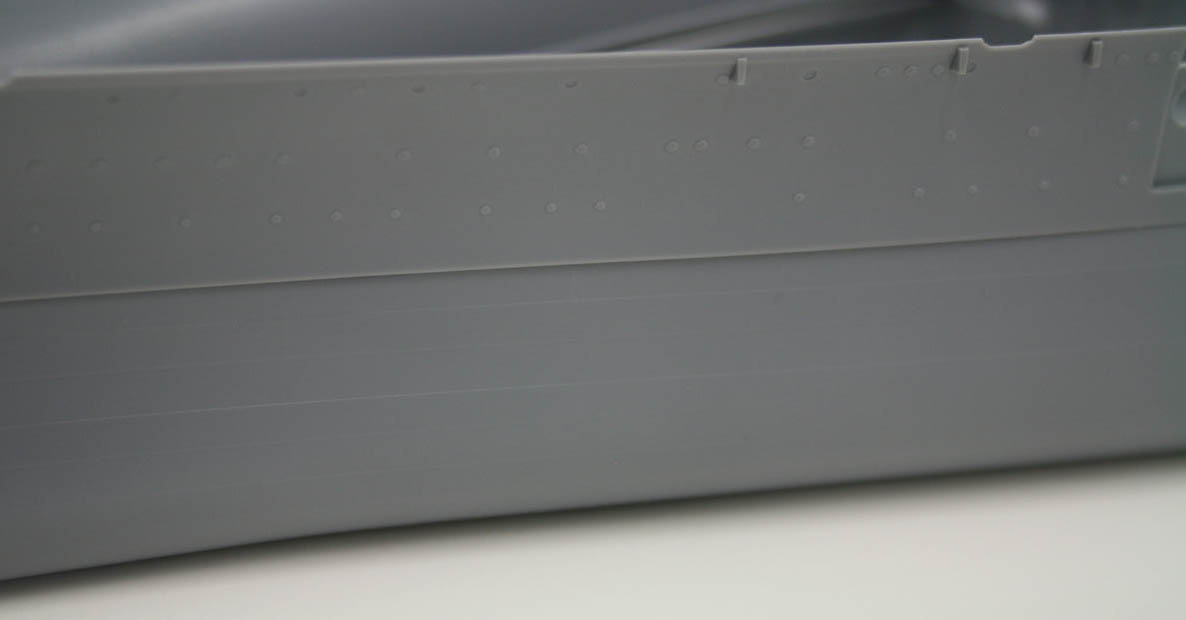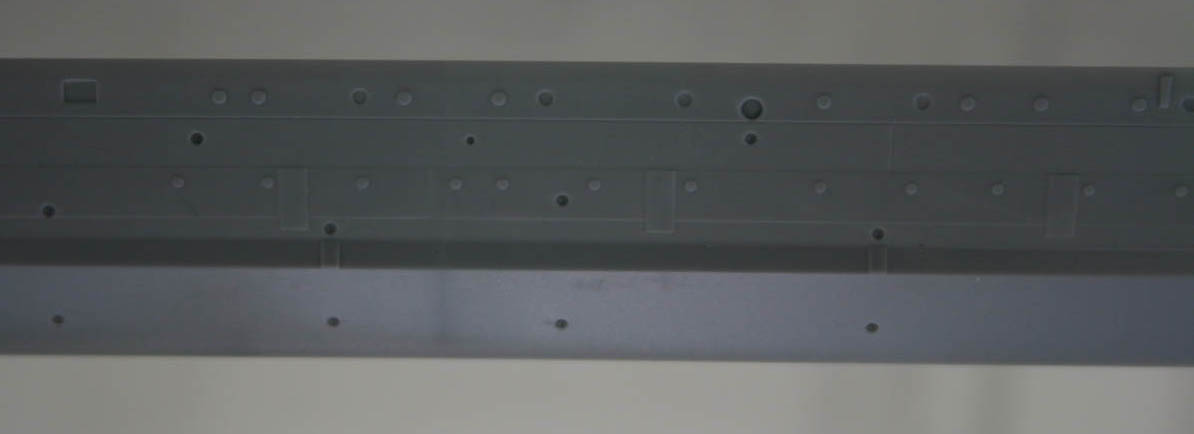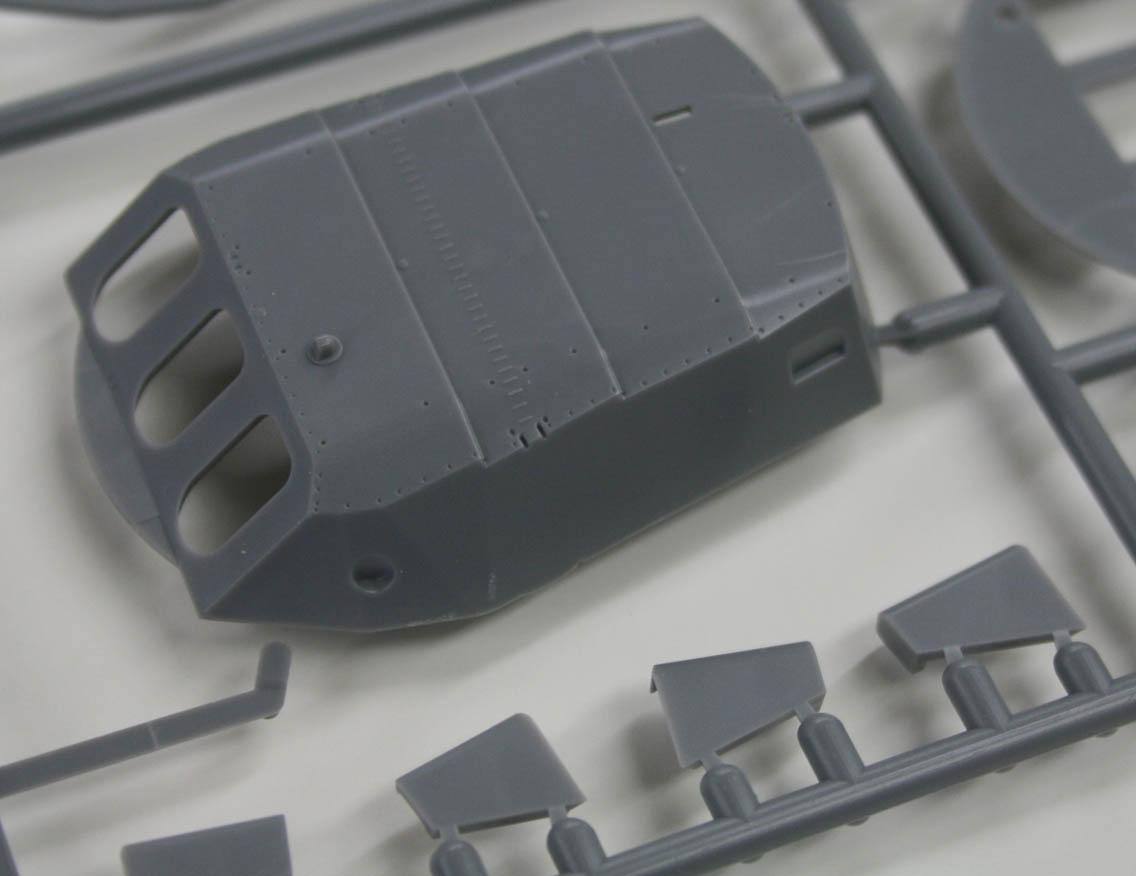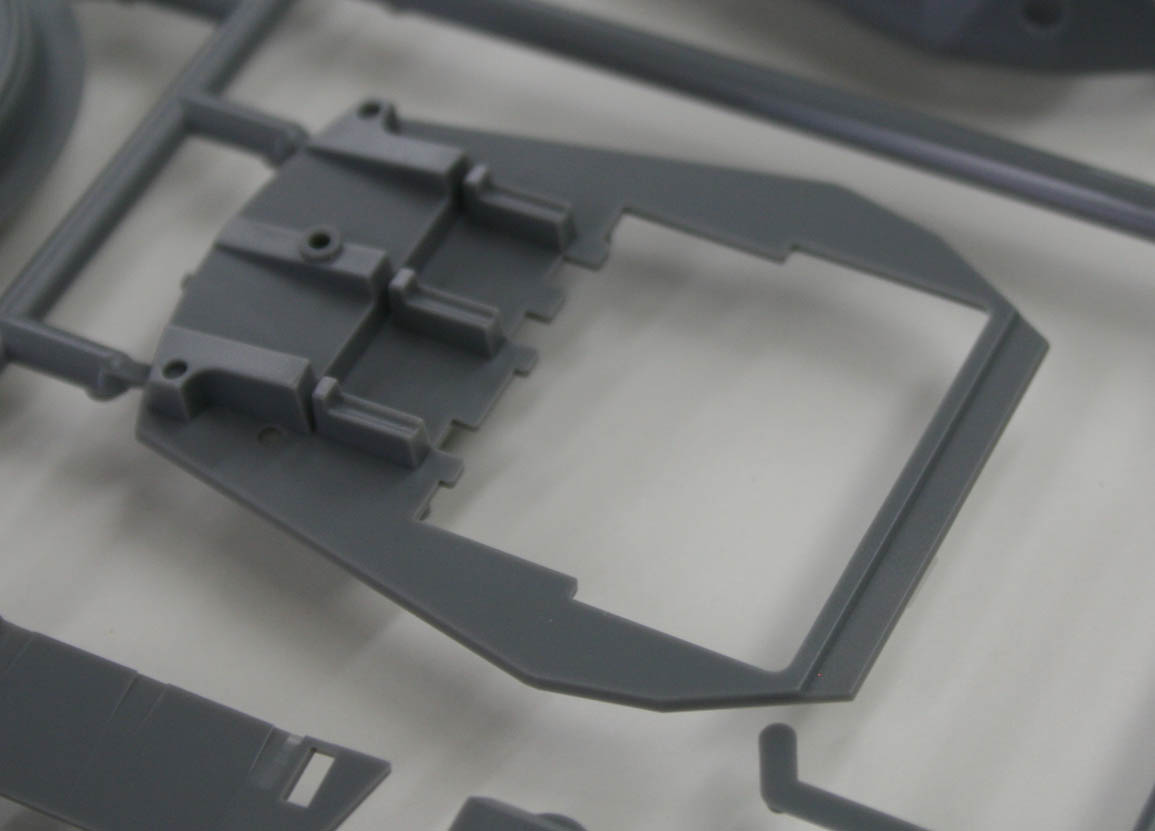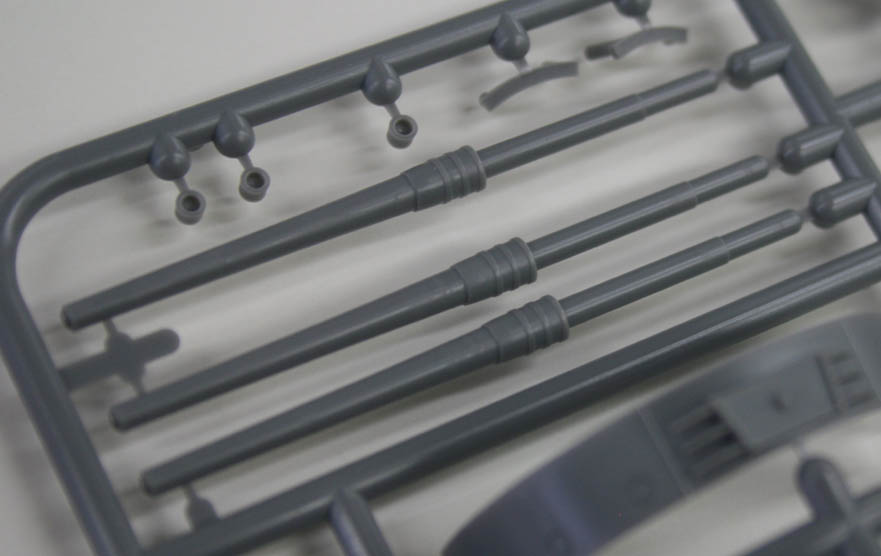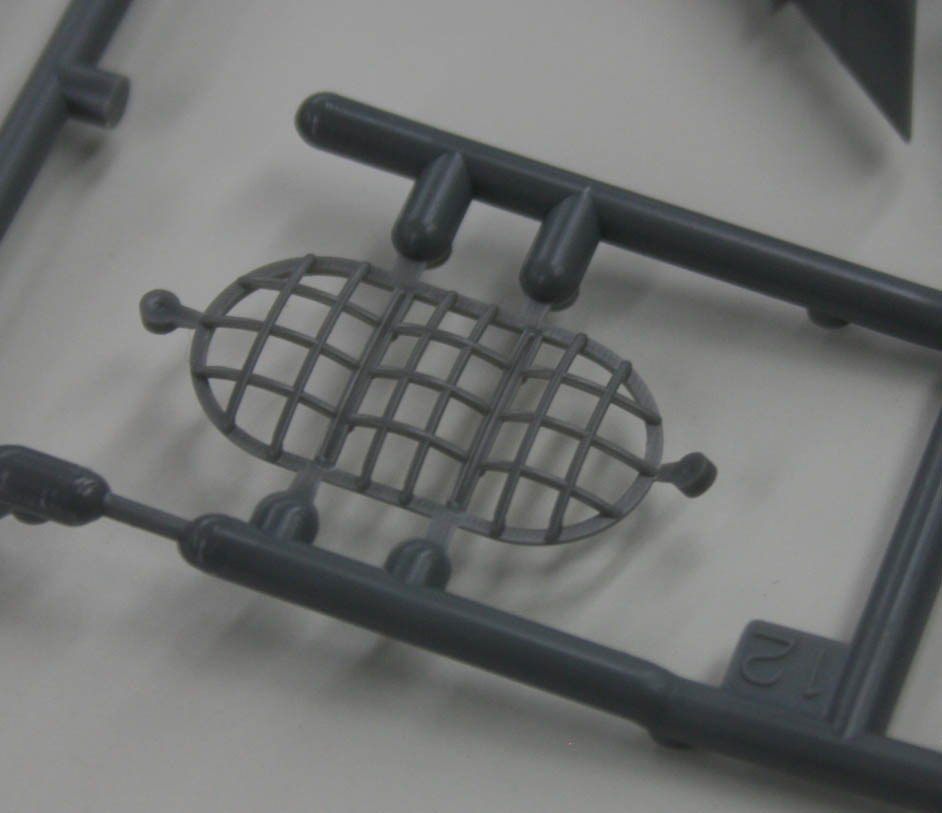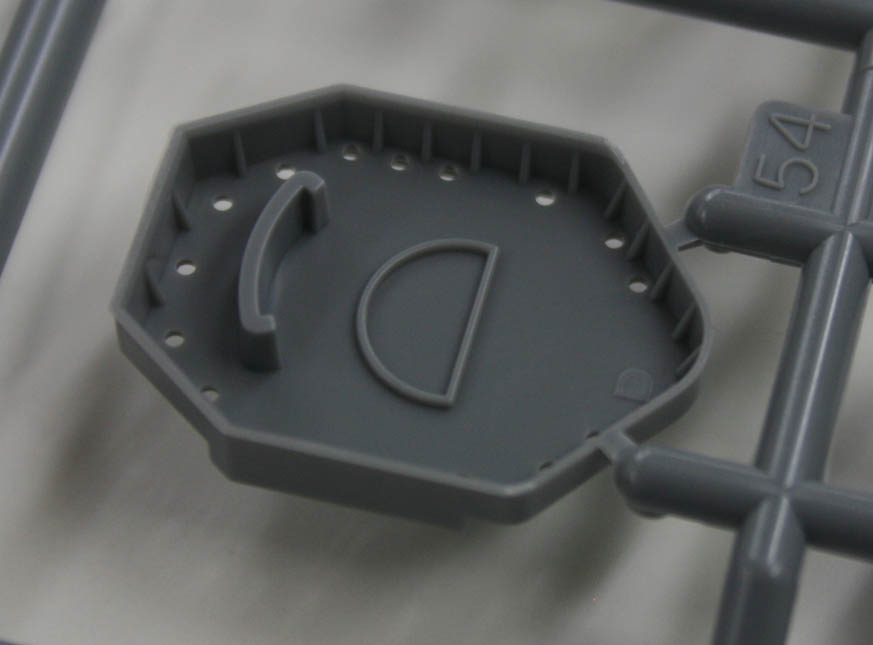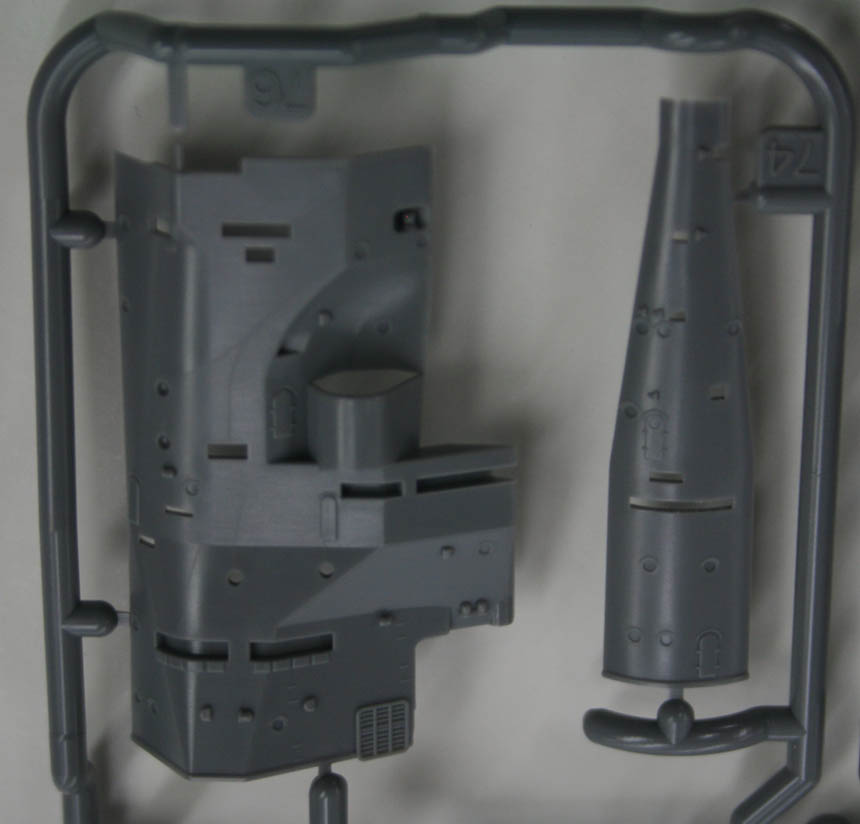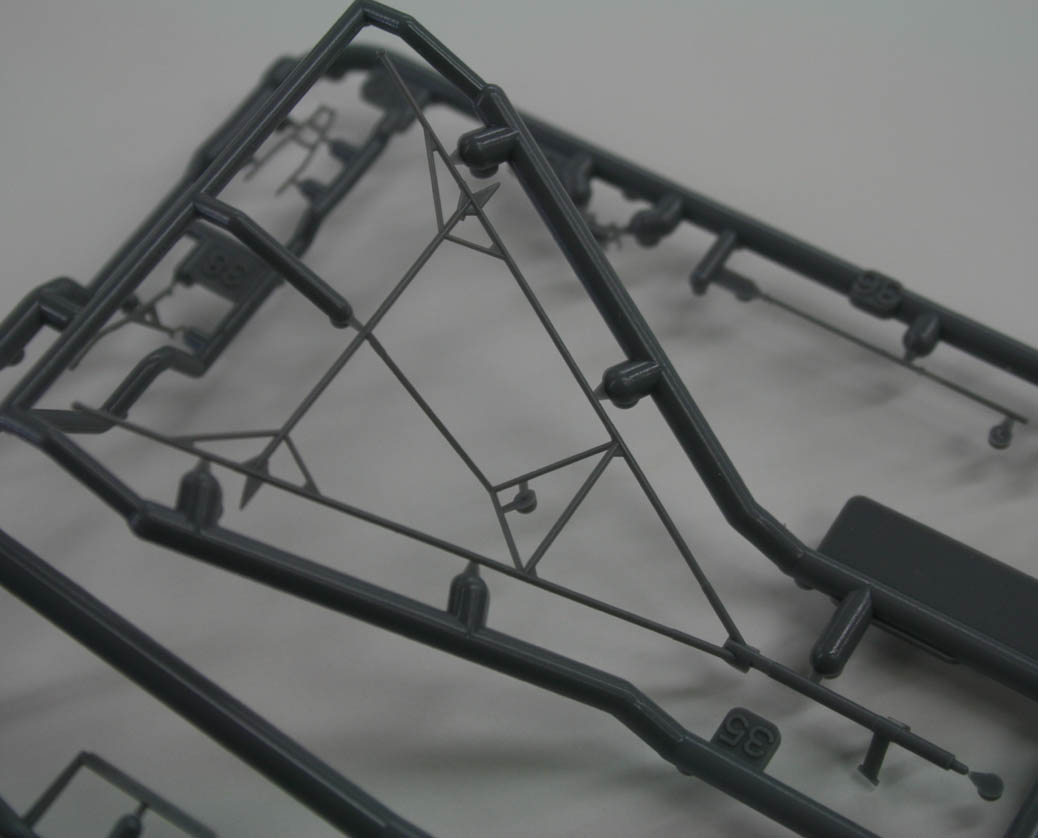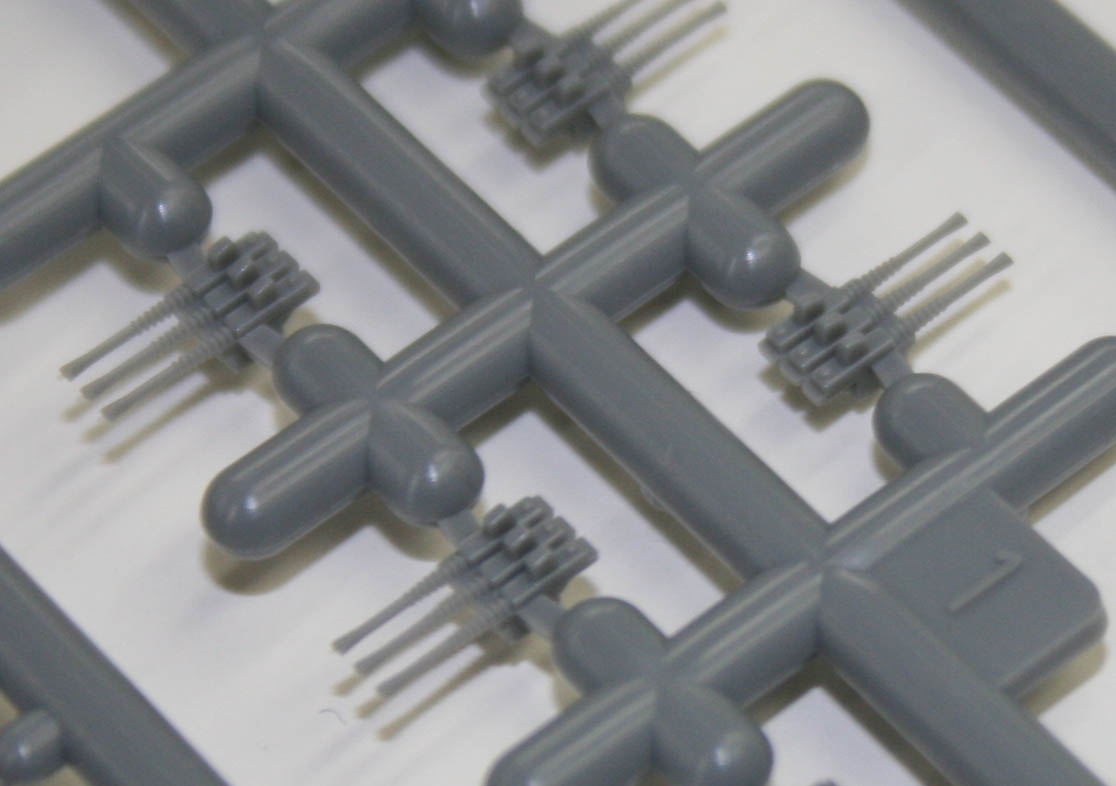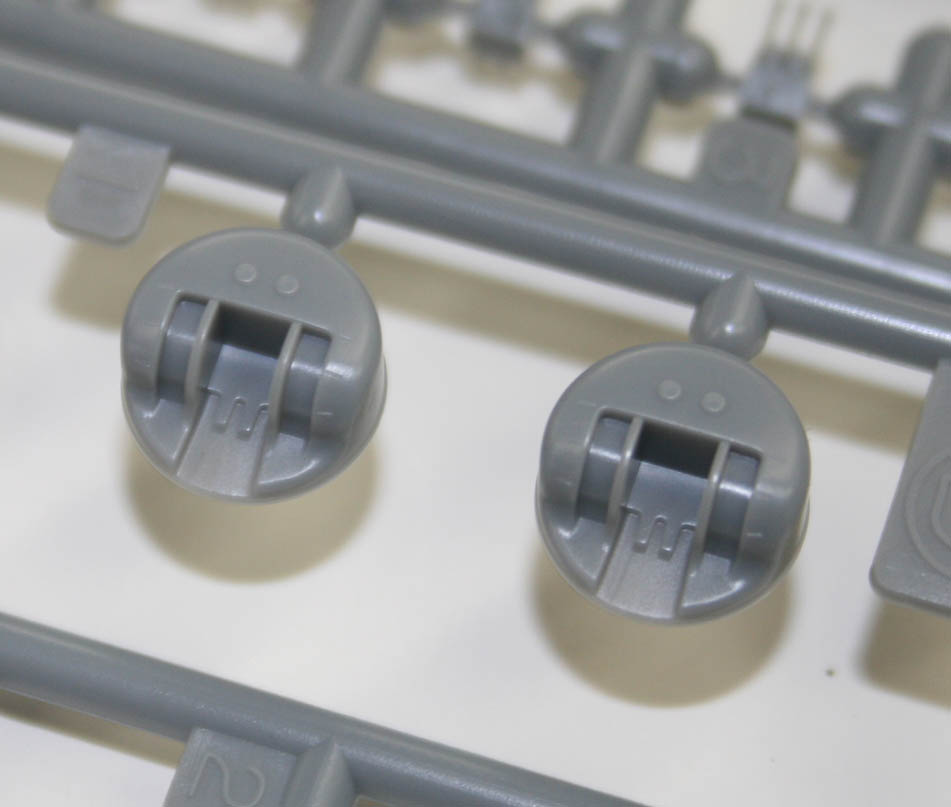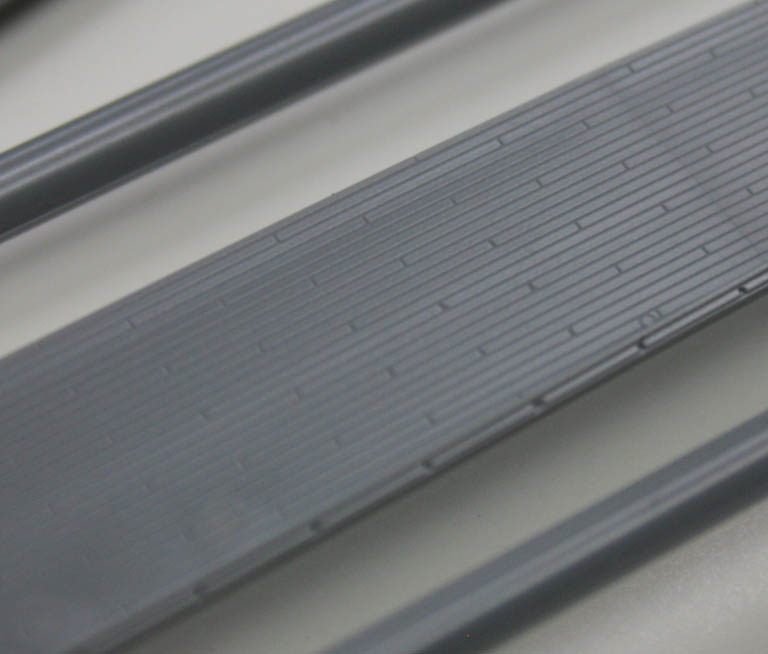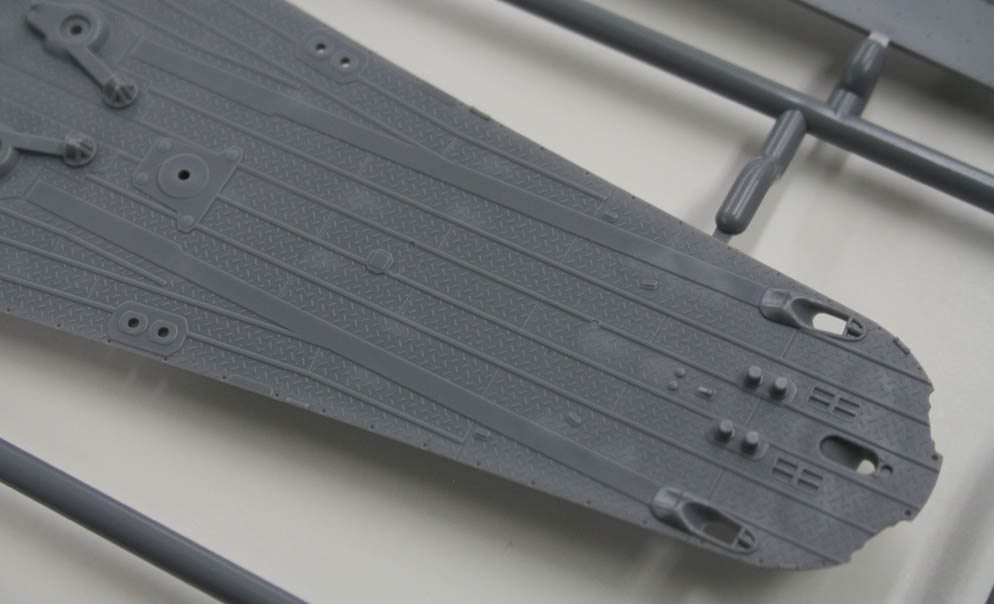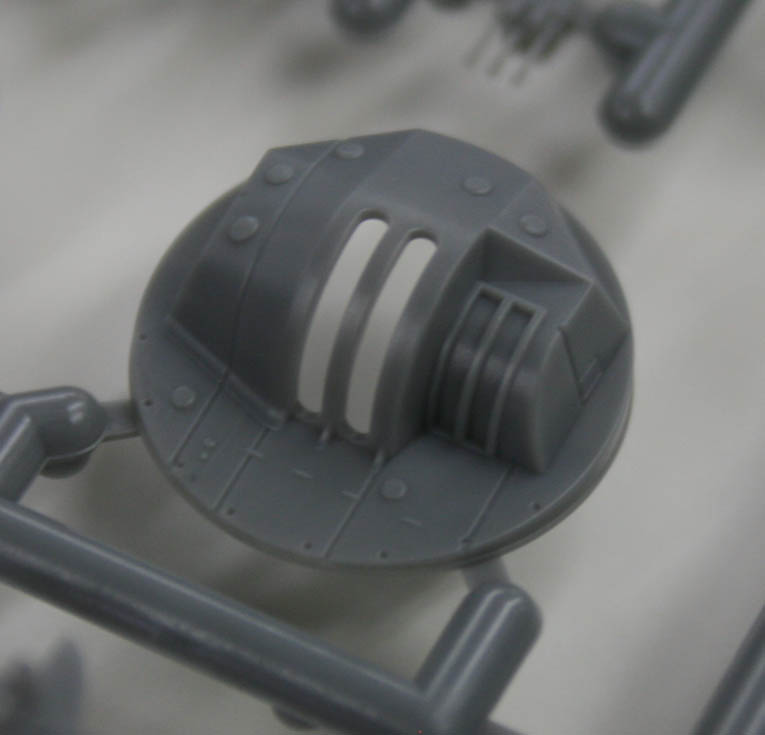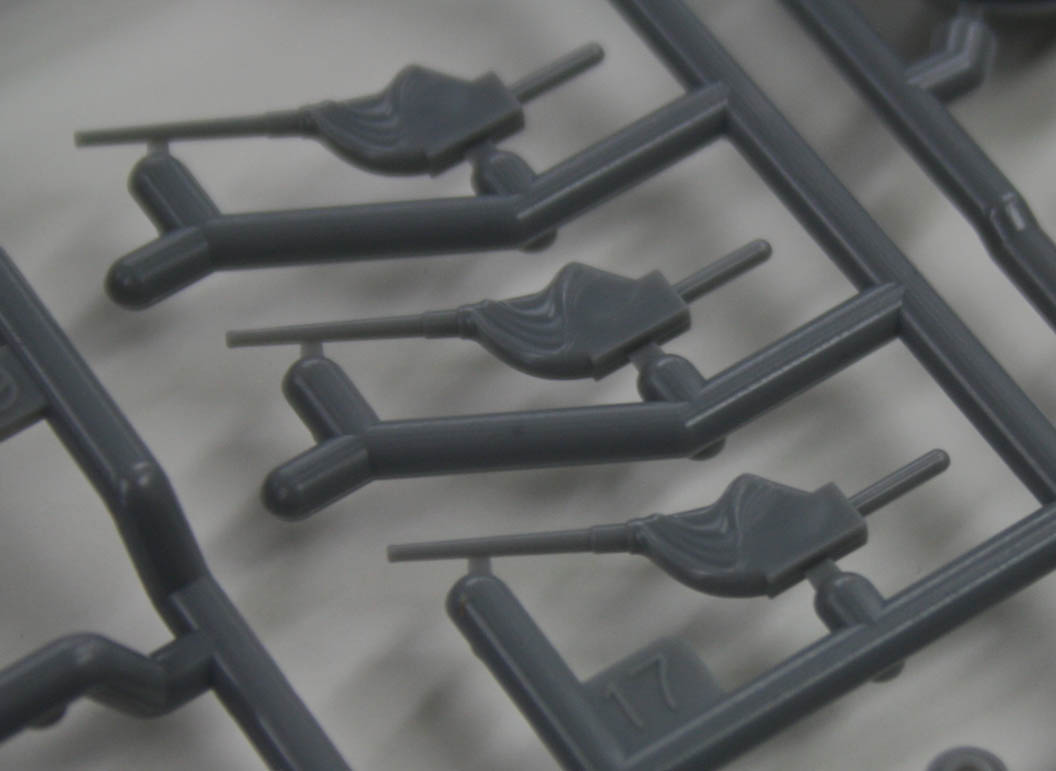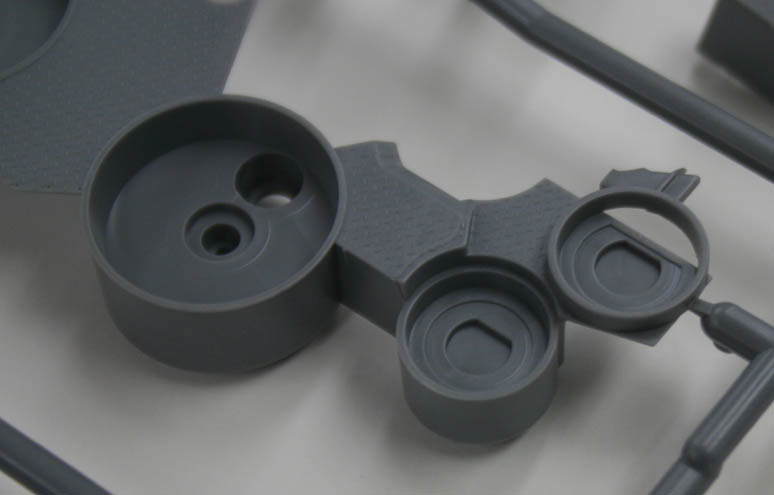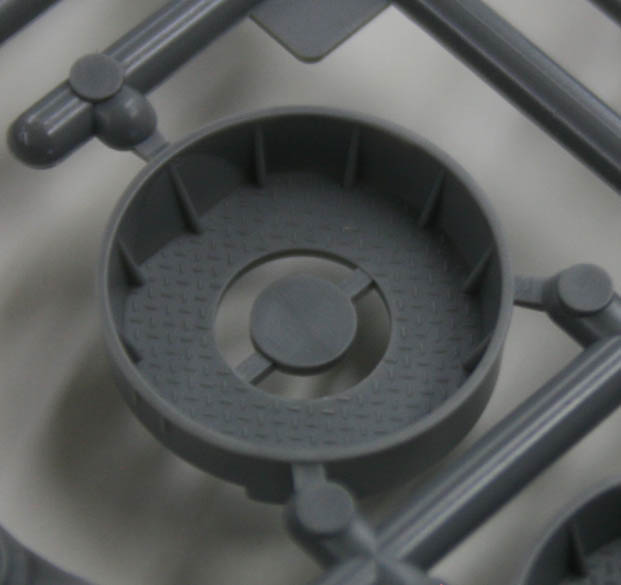
Tamiya New 1/350 Yamato Preview
By Tracy White
Tamiya created quite a buzz at the 2011 Tokyo Hobby show when they confirmed the swirling rumors of a new-tooled Battleship Yamato in 1/350 scale. Thanks to Skyway Model Shop's advanced preview sent to them by Tamiya, we're in a good position to discuss the finer details of this upcoming release. As it was a partial kit, lacking instructions, only the parts that we saw will be up for discussion.
Now, while the seam above does look ugly close up, I'm less worried about the forward one, and in fact I don't think either will be all the difficult to repair. My plan would be to ignore the strake detail; sand down what needs to be to make the lower surface true. Then, with the surviving detail on either side as a guide, lay down Tamiya tape (it's got to be Tamiya tape for a Tamiya Yamato!) along where the edges would be, and then spray some Mr. Surfacer or paint in to fill back in the strake detail. Builders have been using this technique for a while in replicating hull plating and it works well with the proper technique. Because the strakes are long, relatively straight pieces, this should be a fairly easy task for the most part.
The rest of the pieces I'm going to let speak for themselves in the gallery below. Sufficed to say, the detail looks excellent, and I have no doubt that this will build up into an impressive kit. The price will be high in the US, and the old kit can certainly be built into a good representation, but this kit will definitely go a long way to satisfy the hard core Yamato fan.

